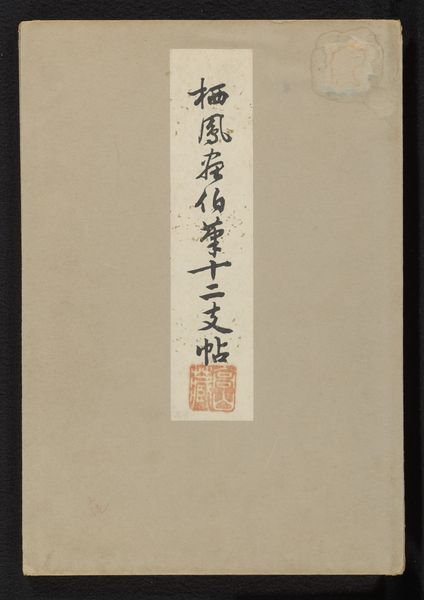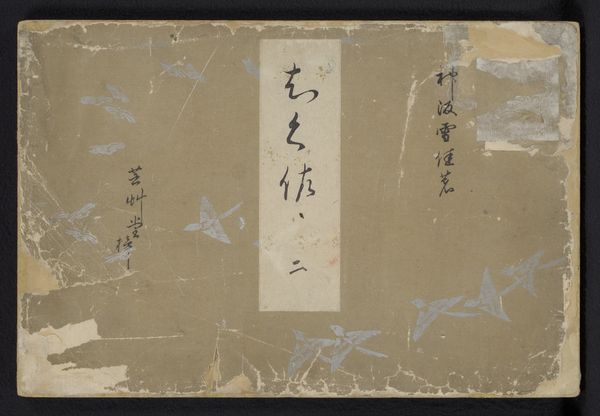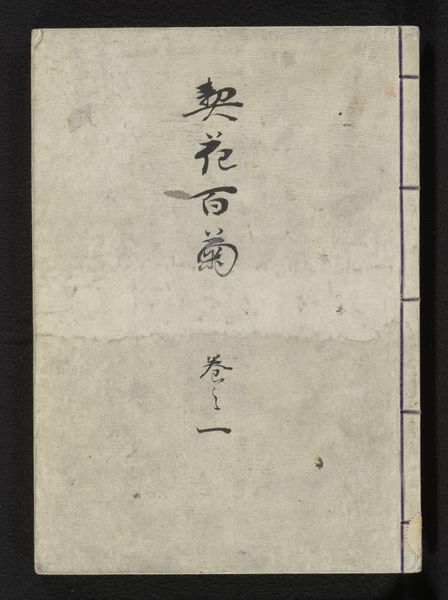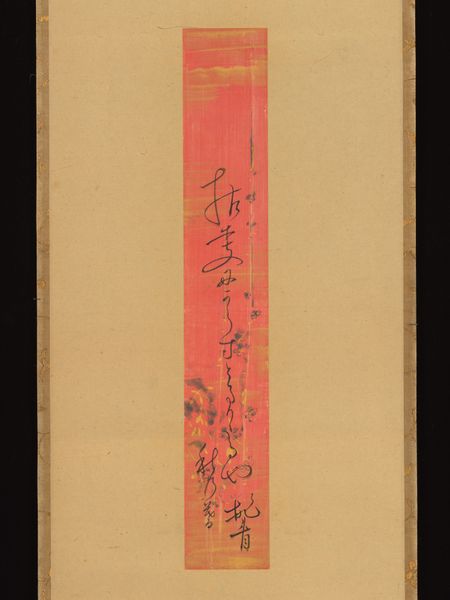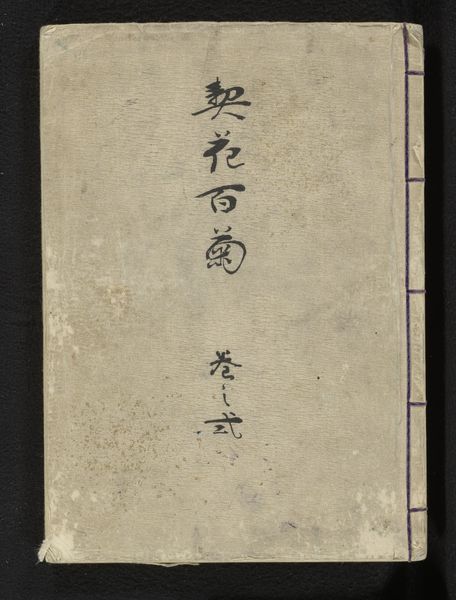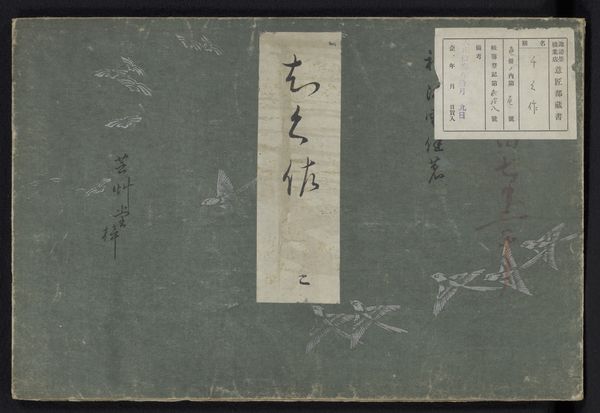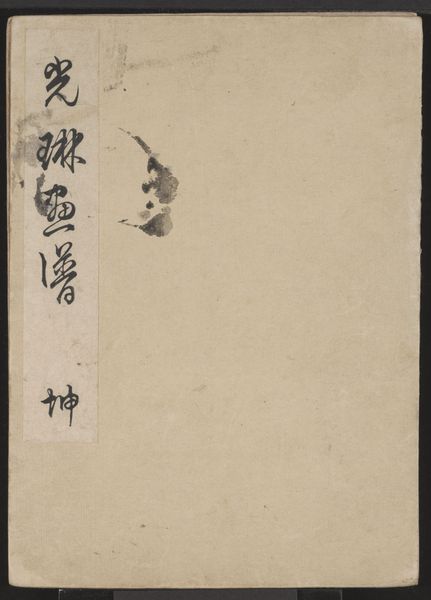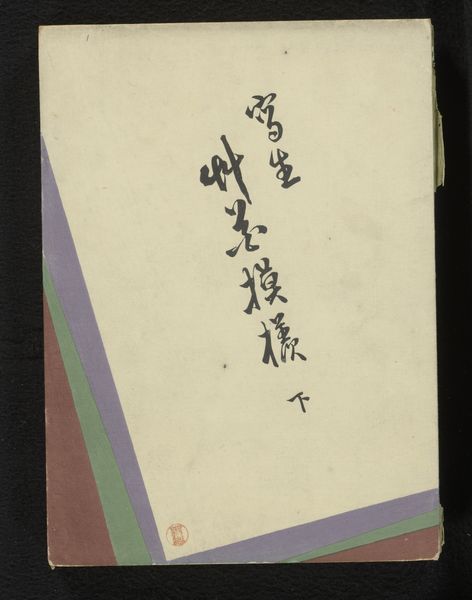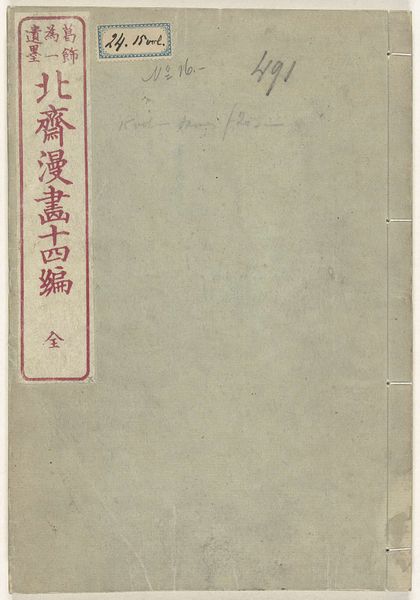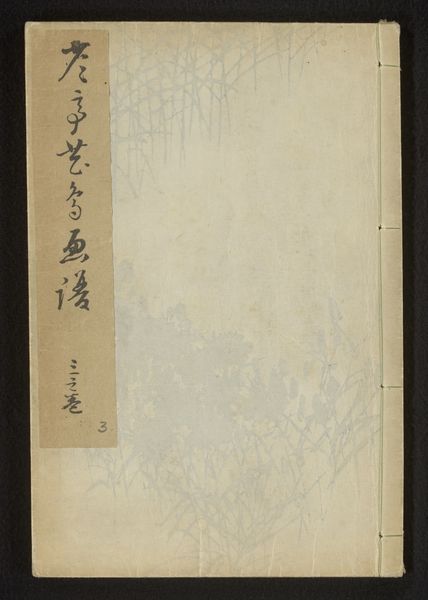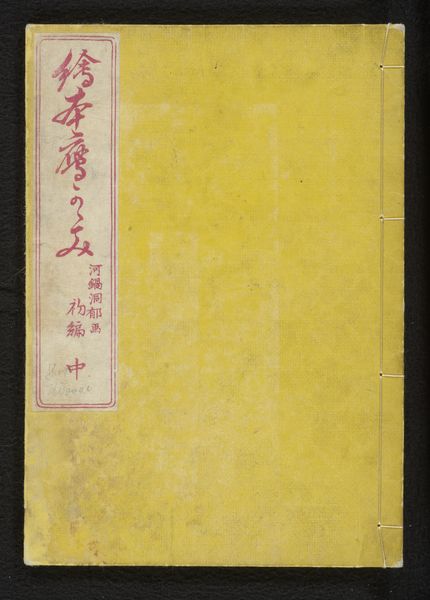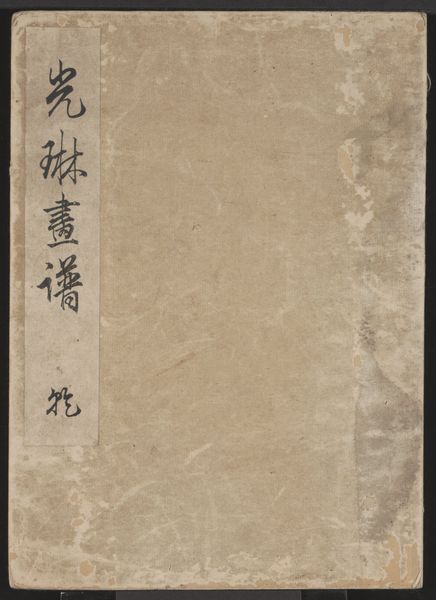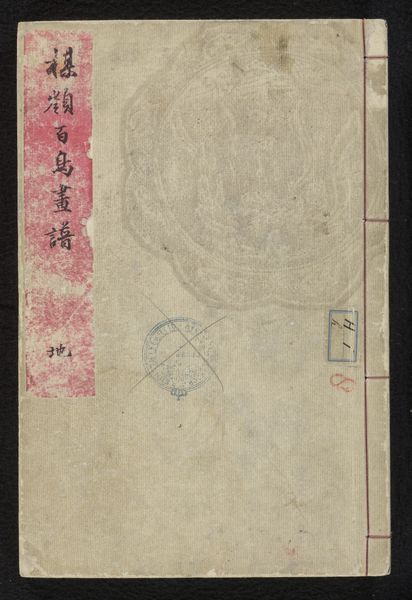
Dimensions: 13/16 × 8 3/4 × 11 13/16 in. (2.06 × 22.23 × 30 cm) (closed)
Copyright: No Copyright - United States
Editor: So this is Kamisaka Sekka's "Worlds of Things (Momoyogusa)," a printed book from 1909. The ink and calligraphy give it such a meditative feeling, but what strikes me most is its serene yet muted tonality. What's your interpretation of this piece? Curator: It's important to view this work through the lens of its historical moment, a period of intense Westernization in Japan. Sekka and other artists associated with the Rinpa revival were actively resisting the wholesale embrace of Western artistic conventions. This book, with its subtle invocation of traditional motifs and techniques, becomes an act of cultural preservation. What do you think the faint waves in the background signify? Editor: They seem like a subtle nod to traditional Japanese prints, maybe a symbol of resilience or continuity? Curator: Exactly. The choice of calligraphy style and even the layout of the page – placing text over the imagery– could be read as a commentary on the disruption of traditional social hierarchies and the dominance of new forms of communication during the Meiji era. It asks us to consider whose voices and stories are being centered and at whose expense. Do you see any traces of Ukiyo-e influence? Editor: Well, the subject matter is drawn from everyday life, and its flat planes remind me of Ukiyo-e prints. This book's beauty almost masks the cultural issues it deals with. Curator: Precisely. Sekka invites us to engage with Japanese heritage and resist cultural imperialism. It demonstrates how we might discover and use cultural touchstones to question prevailing power structures. Editor: I see, so the art isn't just beautiful. It's part of a broader discussion about identity, resistance, and cultural preservation. I never would have known if I hadn’t asked! Curator: It highlights the ability of visual language to speak truth to power!
Comments
minneapolisinstituteofart about 2 years ago
⋮
Worlds of Things comprises three volumes, each with 20 compositions. Printed with a wide palette of colors, including gold and silver, the book was intended to stand on its own as art while also fi tting into the traditional genre of pattern books, providing inspiration for designs. The book is bound as an album, allowing the illustration to extend across two pages. Sekka’s designs focus on a range of traditional themes, from classical literature like The Tale of Genji to landscapes and animals. Due to the ample use of pigment, the production cost of a book like this one was high.
Join the conversation
Join millions of artists and users on Artera today and experience the ultimate creative platform.
minneapolisinstituteofart about 2 years ago
⋮
Worlds of Things comprises three volumes, each with 20 compositions. Printed with a wide palette of colors, including gold and silver, the book was intended to stand on its own as art while also fi tting into the traditional genre of pattern books, providing inspiration for designs. The book is bound as an album, allowing the illustration to extend across two pages. Sekka’s designs focus on a range of traditional themes, from classical literature like The Tale of Genji to landscapes and animals. Due to the ample use of pigment, the production cost of a book like this one was high.
